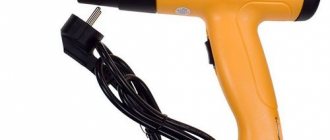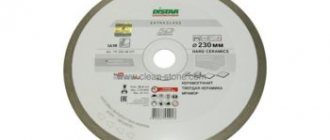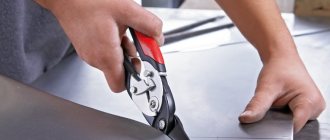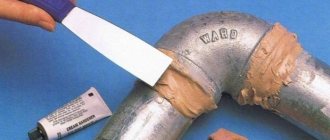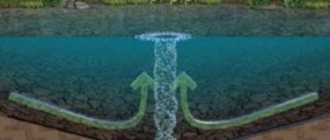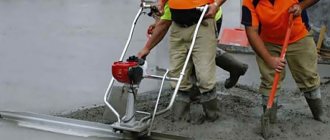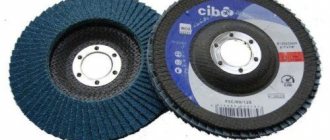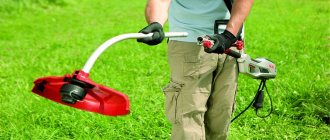One of the options for decorative wood processing is engraving. The master cuts out drawings, makes inscriptions, and creates ornaments. Works manually or uses mechanical tools. With new technologies: milling cutter, engraver, laser, it has become easier for the carver to process wood. At the same time, the beauty and originality of the images were not compromised.
Carving on a block
What products can be made
Carving has been practiced since ancient times, as evidenced by the found rock paintings, ornaments on dishes and other household items. People carved images on different materials: stone, glass, bone.
Wood carving with an engraver is a fascinating activity. With the invention of electrical assistants, decorative processing became simpler, and designs became more complex and elegant.
Wood carving has become popular not only in Russia, but in many countries around the world. For example, Canada, rich in forests, is famous for its architects.
They began to decorate with engraving:
- panels, paintings;
- carved balusters;
- icons, iconostasis;
- headboards of beds, furniture fronts;
- platbands for wooden log houses, baths;
- icon cases, frames.
Key rings, knife handles, corner decors - there’s just so much that wood craftsmen don’t decorate.
For reference! An engraver is a tool that replaced manual drawing on wood. In addition, the device can grind, polish small parts, and perform a long series of actions.
Artistic carving on the butt of a gun
What can you do with an engraver and where to start?
The very first works using an engraving tool are usually performed on soft metal or plexiglass. It could be a simple inscription or a funny drawing. The main thing is to get a taste and feel your power over intractable material. To make your first panel or engraving on any object, you need to prepare a sketch and transfer it to the object where the drawing will be located.
Then, having selected a suitable nozzle, at low speeds of the engraver, you need to apply grooves to the object. Of course, the first pancake may turn out to be a big lump. However, each time the engraver’s hand will become more and more confident, and the drawing or inscription will become more beautiful and clear.
Rules for beginners
Engravers work not only on wood, but also on stone, leather, glass, metal, bone, and plastic. In order for the work to be of high quality, and for the carver to carry it out comfortably, you need to know how to work with an engraver and adhere to the rules. This is especially important for beginners.
It is advisable for beginning carvers to master the technique of carving with a hand engraver rather than an electric one.
To begin with, they “stuff” their hand. They learn to cut grooves, grooves, and simple shapes. Necessary tools for working as a hand wood engraver:
- gravers with thin steel rods (v-shaped, angular, flat);
- lamp with lens;
- punches (for dotted lines, dots);
- chisels;
- substrate for the workpiece.
It is advisable for a beginning carver to use a tutorial with ready-made drawings, ornaments and techniques, or take several lessons from professionals.
Note! When working as a wood engraver, the workpiece is placed on a small cushion so that the material does not slip. The pillow itself is fixed with double-sided tape.
Rules for wood carving with an engraver for beginning carvers:
- The desktop should be free, no unnecessary objects.
- A special lamp for soft illumination of the workplace.
- It is unacceptable to jerk the instrument in different directions, play around with it, or knock on the table.
- The engraver must not be left accessible to children.
- While the instrument is running, it is prohibited to remove or change the attachment.
- During operation, the device should be kept away from your face to avoid accidental injury.
All attachments, cutters, and tools necessary for work should be laid out on shelves and drawers so that they can be easily retrieved without being dragged anywhere.
Shelves with woodcarver's tools
Setting up a laser engraver before work
The laser engraving machine must be configured before use to ensure it functions efficiently and correctly. First you need to prepare:
- install the machine on a flat, hard surface, and then secure it;
- connect grounding to the equipment;
- check the presence of coolant in the tank (water);
- connect the pump, compressor and machine to the electrical network.
Finally, you need to make sure that there are no liquid leaks: if water leaks, the unit will quickly break down.
Please note that the height difference between the laser tube and the pump should not exceed 0.5 m.
Further setup of the laser engraver is performed in the following sequence:
- turn on the pumping unit;
- check water circulation;
- supply power to the machine;
- turn on the laser;
- connect the computer to the machine using a USB cable and start it;
- are included in the software of the engraving machine, where they set the values of the current parameters;
- perform adjustment (adjust the movement of the beam) of the laser engraver, controlling the process using certain keys available on the machine panel.
You can make homemade laser engraving machines based on Arduino. They will be able to process balsa wood, plastic and some other materials. If you connect the laser to the Arduino, the engraver will also need to be configured.
Carrying out adjustment and determining the focal length
The laser engraver is adjusted in the following sequence.
- Turn on the equipment.
- A cardboard sheet of suitable size is placed in the work area in front of each reflector.
- Press the button that turns on the optical system of the machine. This produces a laser beam that leaves a mark on the cardboard.
- If the mark is not located in the center of the reflector, then center the laser tube using a special fastener.
- Press the start button again. In this case, the beam, having passed the first reflector, will create a spot on the cardboard of the second.
- If the mark does not coincide with the center of another reflector, then both reflectors are adjusted: in one - the angle of reflection, and in the second - horizontality.
- The remaining reflectors are configured in the same way.
- Check the operation of the machine.
Before adjustment, you need to check the laser power in the engraver, setting its value at a level not exceeding 80% of the maximum value of this parameter. It is also necessary to protect your eyes with goggles and make sure that your hands do not fall into the beam field. In general, it is recommended that two people perform the adjustment.
In addition to setting the beam movement, you need to set the focal length. This parameter affects the accuracy and depth of engraving. All work is done as follows:
- in the working area of the machine, for example, plexiglass is placed;
- unscrew the screw securing the laser head;
- change the distance from it to the material, including the laser;
- leave the laser head in a position in which the spots have the smallest diameter but the greatest depth.
The found distance will be the optimal focal length. After determining and adjusting it, they proceed directly to working on the machine.
Further maintenance of laser equipment
Laser engraving machines of different sizes must be maintained regularly. Timely and correct maintenance allows you to extend the life of your equipment and ensure its constant efficiency. For laser engraving machines, it includes the following operations:
- checking the reliability of the grounding system for a machine with a computer;
- maintaining linear guides clean and lubricating them;
- periodic replacement of coolant (water);
- wiping mirrors and lenses from dust;
- cleaning the fan and corrugation.
Linear guides (X and Y axes) are wiped from dust with a dry cloth until they shine, having first moved the laser head as far as possible to the right or left position (forward or backward). They are then lubricated using oil, such as sewing machine oil. To ensure that the lubricant is well distributed, move the laser head.
The water is changed approximately once every 2-5 days. For these purposes, about 50 liters of purified water with a temperature of no more than 40 degrees (optimally +5-+25) is required.
The frequency of fluid replacement and its volume depend on the model of laser engraver being used. They are indicated in the instructions for this machine equipment.
The inside of the laser device must be kept dry at all times. If moisture is detected, turn off the power and wipe off the liquid. Mirrors and lenses become dirty very easily. This causes the equipment to stop operating and damage its individual components. Cleaning is done using a cotton cloth soaked in acetone or alcohol. In this case, the lens should be handled with special care so as not to miss it or damage the covering film.
Laser Engraver Lenses
Over time, the internal hood with corrugation becomes clogged, as a result of which more noise begins to come from the equipment during operation. These parts are first separated and then wiped with a rag. If the engraving machine is equipped with a gas laser tube (CO2), it will need to be replaced after about six months. The time period depends on the intensity of use.
It is necessary to keep not only the machine clean, but also the workplace itself. It is recommended to clean or check for contamination of parts every 8 hours of operation. The cleanliness of the optical elements affects the quality and depth of processing. The engraving device also requires a reliable power supply. To do this, it is recommended to use a voltage stabilizer designed for the appropriate power of the laser tool.
Recommendations for choosing nozzles
The tree is processed with an appropriate drill with 2 main parameters:
- power;
- number of revolutions of the main rotating spindle.
Note! It is more convenient to work with a drill equipped with a power switch (should not be less than 250 W). Otherwise, you will have to frequently turn off the engraver to cool down and interrupt work.
The choice of attachments depends on the type of work.
Along with the drill, the kit includes the necessary attachments:
- cutters, cutters;
- drill;
- felt for polishing;
- cutting wheels, grinding;
- collets.
Drill manufacturers have different sets of attachments, but, as a rule, they have everything necessary for novice wood engravers to work as a wood engraver.
If the carver is not a beginner and knows how to work as an engraver, he may need diamond bits (with diamond coating). They are not always included with the drill, so you will have to buy them.
For ease of use with a bur, especially for inexperienced carvers, it is advisable to purchase a flexible shaft.
You will also need a tripod on which to hang the bur.
Note! The flexible shaft affects the power of the engraver engine, reducing it by almost half.
Flexible shaft drill
Chinese wood carving kits are cheaper than those from other manufacturers. But users note that Chinese burs are too noisy, and the included cutters are poorly sharpened and quickly become dull.
Experienced carvers always purchase additional attachments, and for those starting to master the basics of artistic carving, a Chinese engraver with attachments included will be enough.
The main thing is to pay attention to the fact that the attachments are intended for processing wood. For example, metal cutters will not be able to cut wood due to the sharpening angles.
Repair - what you can do yourself
In case of serious damage, of course, it is better to contact a workshop. But in many cases you can handle it yourself. If we are talking about a Dremel tool, then disassembling it is not difficult - just unscrew the screws and pry off the body parts with a screwdriver. They come apart easily.
Electric engraver device
The machine consists of a motor (stator, armature), a spindle (shaft), brushes, a cooling system, and a tip to which the equipment is attached. Some models are equipped with a speed switch, impact force switch, and electronics (screen showing the number of revolutions). But the general principle remains the same.
The electric engraver is easy to disassemble - just unscrew the screws and, using a screwdriver, pry the case apart
Internal structure of the electric engraver: 1 — speed switch, 2 — brushes on the sides, 3 — motor, 4 — “fan” on the armature, 5 — stop button; 6 - tip.
Photo gallery: components of an electric engraver
Stator - the outer, stationary part of the engine
The armature, or rotor, is the internal, moving part of the engine.
Bearings are installed at the edges of the armature
The device makes an uncharacteristic sound, the air flow from the fan increases
Perhaps the armature is catching on the stator. One of the reasons is the failure of the rubber ring - the coupling; over time it can wear out or even break. In order to replace the clutch, you need to disassemble not only the housing itself, but also the engine.
Video: disassembling the electric engraver motor, replacing the coupling
Overheat
If the machine heats up too much and too quickly, the bearings may be clogged with dirt and need to be cleaned and lubricated. It is necessary to remove the armature; there is no need to remove the bearings from it. First, use an awl to carefully remove the anthers, then wash the bearings with kerosene. Rinse very thoroughly. For this, as for lubricant, you can use a syringe. If the anthers become deformed during disassembly, they need to be straightened - a small flat-head screwdriver is convenient for this.
Video: cleaning and lubricating bearings
Poor speed shifting
The switch may be faulty due to clogged dust - small particles flying during operation. To do this, you need to disassemble the device and clean it. It is very effective to blow out the insides of the instrument with compressed air from a small cylinder. Remove remaining dust with a brush.
Video: cleaning the speed switch
Master class for a beginner wood carver
First, the wood is selected. Experienced craftsmen do not recommend using pine because it is layered: a soft layer is combined with a hard one.
Description of the procedure for artistic carving.
- First they draw a sketch. Or they select a photograph or picture from other sources, for example, from the Internet.
- Place copy paper on a working wooden surface, and place a drawing on top. Secure with clamps.
- Using cutters, the outline of the future image is manually made.
- The drawing and background are polished. Sanding is a labor-intensive and painstaking task.
- Cover with stain. Apply varnish. But not all craftsmen like varnish coating. They use drying oil, which does not give unnecessary glare, the product remains matte.
This is what the work of novice carvers looks like.
Drill carving technology
The work of a wood engraver consists of stages, at each of which the master uses different attachments.
Set of cutters
The first (rough) wood processing begins. Give shape, cut corners using rasp attachments: cone, barrel, mace, ball.
At this stage, the most popular attachment is the barrel.
The next stage is medium processing. Using attachments and discs of different diameters, the edges are removed and smaller parts are cut out. In this case, a different bur is used, with a narrower grip. For beginners, it is enough to have one drill.
Then they work with diamond nozzles (diamond-coated cutters): drop-shaped, peak-shaped.
Then the product is polished. You can use a nylon circle with long pile as a nozzle. It will penetrate into all bulges and depressions. The nozzle exposes the pattern, making it brighter.
The final stage is grinding with a grinding wheel.
After all stages of work, the product is painted, decorated with stones and metals
Caring for engraving equipment and tools
In order for the engraver to work longer and perform his tasks, he must take care of the tool.
Before turning it on, you need to inspect the drill to see if any dents, cracks, or chips have formed.
When operating the drill, a lot of dust and shavings come out, which clog the instrument. After each use, the engraver must be cleaned and any debris removed.
In the absence of forced ventilation, the engraver is turned off after 15-20 minutes. work to cool down.
Experienced carvers do not recommend working with dull cutters. It is necessary to change them or sharpen them on time.
Note! The difference in tooth sharpening between cutters affects the operation of the drill.

